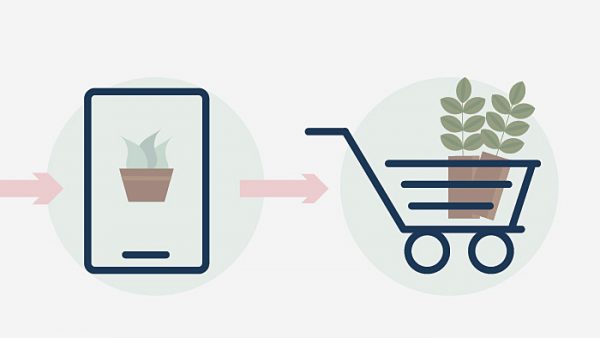
A tale of attribution modeling and tracking the sale.
Emma’s Garden Emporium just sold its first custom-made watering widgets. One was purchased via Emma’s website, and one was bought at her brick-and-mortar store. Emma gives an employee a high-five!
Like anyone in the business of selling products, Emma would like to sell more. And she knows one of the best ways to do that is to learn what led to the sales of those widgets. She wants to determine the path those customers took to get to her stores – the digital and the physical – so she can focus her marketing dollars on those paths.
Was it the Facebook ads? The promoted tweet? Targeted display ads?
What Emma wants to understand is her customer’s conversion journey. Ultimately revealing which ads had the most effect on an individual purchase. In order to get a complete picture, Emma will have to assign credit to an interaction or ad exposure.
Today, assigning credit to one or more of those marketing channels – especially on digital formats – is much easier. And yet, much harder. Wait. What?
Let us explain. The advent of digital media made tracking customer touchpoints much easier. However, the digital media landscape has become quite expansive. On top of that, consumers bounce from one website to another using multiple devices. For instance, User X might be a cord-cutter who saw an ad on Hulu. Then they started browsing the internet on their mobile device where they also saw a display ad. Now their interest is piqued, causing them to search the product on Google, which led to a purchase on the website. In general, it can be extremely hard to identify which channels to invest in. However, an attribution model can reveal that conversion path, telling you exactly what ads your customer was exposed to before the purchase.
If you’re Emma, finding the best attribution model for your business can be stressful. Should the first ad the consumer saw get the most credit? Or maybe the last touchpoint? Many marketers choose the last click, but that ignores the other touchpoints consumers had before making a purchase. It can also cause you to miss out on quality marketing opportunities that led to the sale.
Deciphering attribution models is where marketers come in. It’s what they do. They’ve spent countless hours of their lives studying this precise, measurable science known as attribution. They’ve studied every attribution model available and determined which is best for you and your business.
Tracking the customers who buy online is easy. But what about the customers who come into her store to shop? Many advertisers have trouble with this, but there are various tools that allow you to measure offline (in-person) conversions. The two behemoths Facebook and Google allow you to upload offline conversions. Don’t have that data? No problem. Marketers can also help you identify customers who were exposed to your ad and also visited your location. In some respect, this can partially close the sales loop.
Again, this is what marketers do. They track every dollar you spend on marketing and advertising and measure its success. They call that Return on Ad Spend (ROAS). They know the latest trends, the latest media platforms, and they know what’s next (because it’s constantly changing).
Ultimately, a business benefits most from a layered measurable approach to media. Integrating with consumers’ lives, whether they are in front of a TV or computer screen, scrolling on a mobile device, listening to a podcast or streaming music during their commute. All of these together can help a business get in front of consumers at the right moment. It’s important to understand which of these mixes intersect with your customer’s life the most. Attribution models can help with that. In fact, it’s what ultimately led to Emma selling more watering widgets. And handing out more high-fives.



